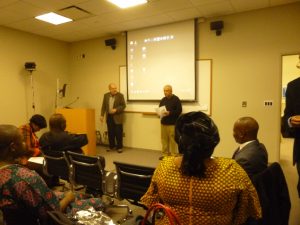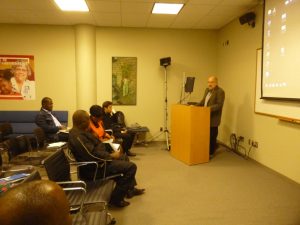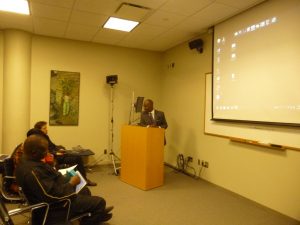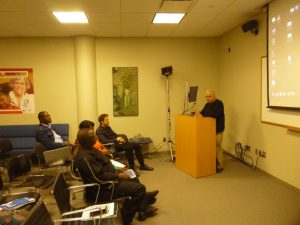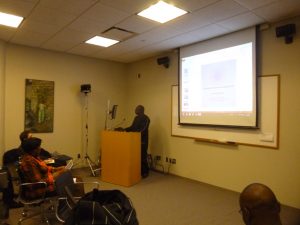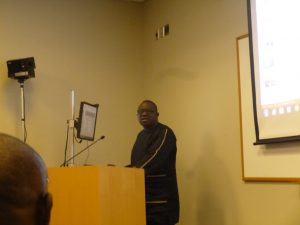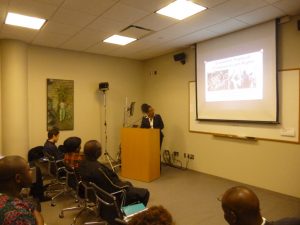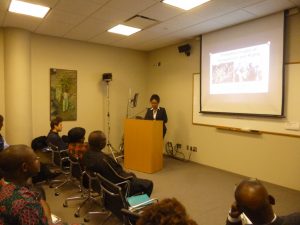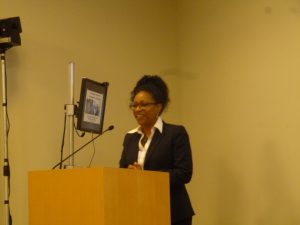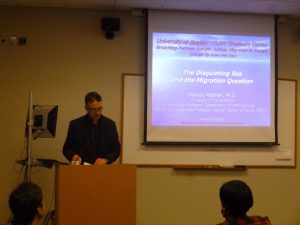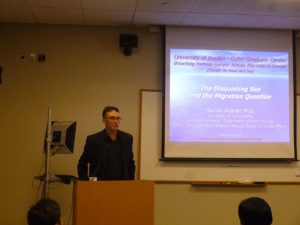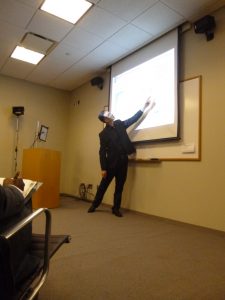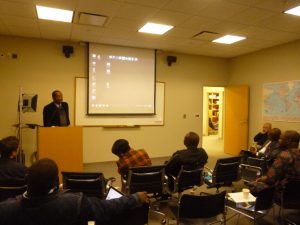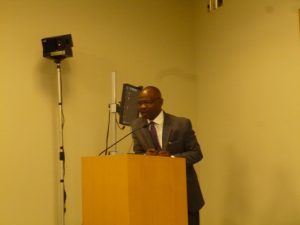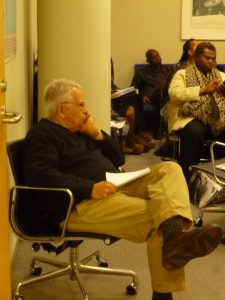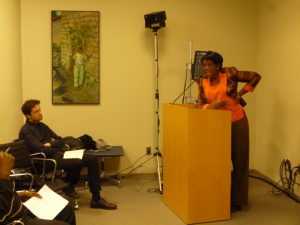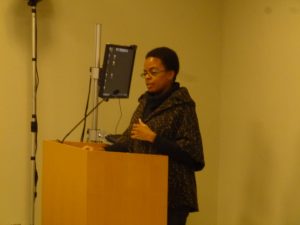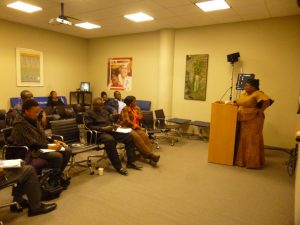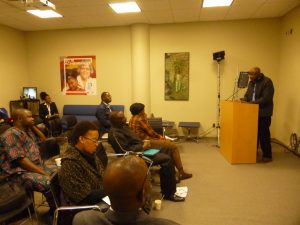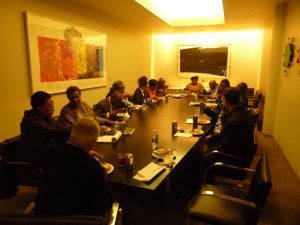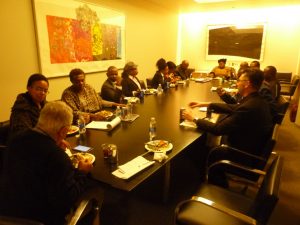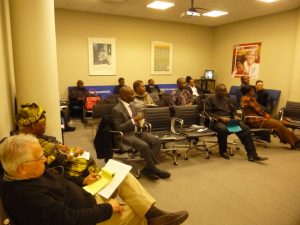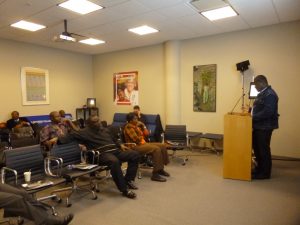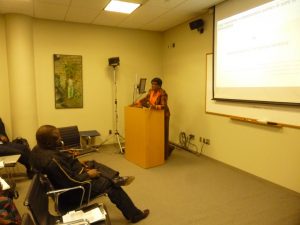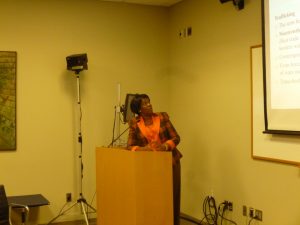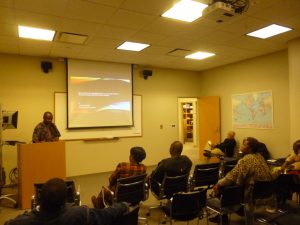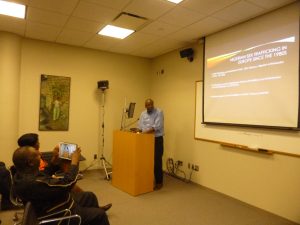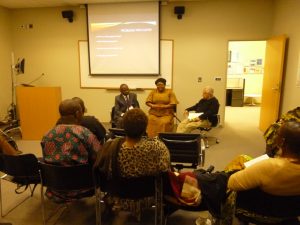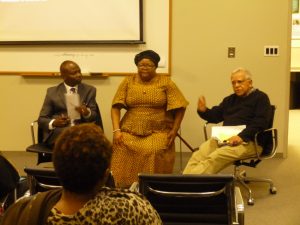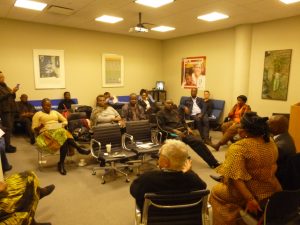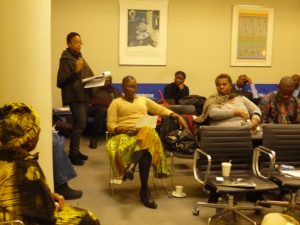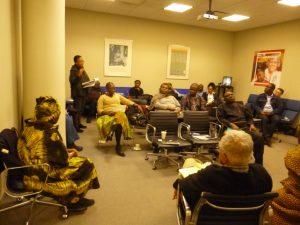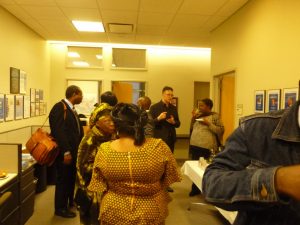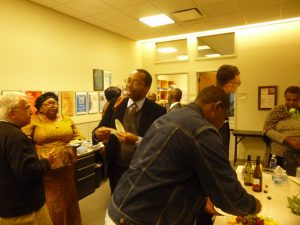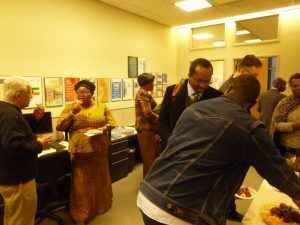According to a recent Pew Research Report, between 2009 and 2014, one million people repatriated from the United States to Mexico. As a qualitative researcher, Dr. Tatyana Kleyn is interested in the stories behind these numbers. In particular, she studies the experiences of children and young adults who undergo these crossings—physical, social, linguistic, and educational. “Transborder youth are crossing many borders,” she said. Indeed, some recurring themes both in her research program and in reactions to her research are the power of language to form community and the need to cross borders in order to understand multiple perspectives. This blog piece begins by exploring the research topics, methodology and general findings of Kleyn’s work, and it ends by discussing the reactions to her lecture and offering practical suggestions for moving forward.
The Research
Kleyn, who is Associate Professor in the Bilingual Education and TESOL programs at the City College of New York, began her study entitled “The Other Side of Deportation Repatriation” as a Fulbright scholar in Mexico from 2014 to 2015.
Through interviews, classroom observations, and collections of art and poetry, Kleyn assembles portraits of transborder youth in elementary, secondary, and tertiary schools in Oaxaca, Mexico. Additionally, she uses documentary film as both a research method and tool for disseminating research findings to larger audiences. She said, “Film is accessible across borders. It does not matter your educational level or what language you speak.” Ethnographic data from her research on transborder youth in Oaxaca is highlighted in the documentary film “Una Vida, Dos Paises: Children and Youth (Back) in Mexico.” The complete film and accompanying unit plans are freely available at www.UnaVidatheFilm.com.
So, what are her findings? First, transborder youth bring their assets of multilingualism and multiculturalism that can be harnessed in the classroom. Differentiating classroom instruction to exploit their English language skills and knowledge of United States cultures can better support everyone in the learning community.
Second, it is important to note that transborder children are multifaceted and have varying degrees of fluency in the languages that they speak. Their linguistic repertoires are formed from the multiple speech communities that they have lived in. For example, one could hear features of U.S. English from the Midwest, Florida, and California; features of Spanish spoken in Latinx communities in Southern California; and Zapoteca, a language indigenous to Mexico. Generally, most of the youth in her study are more fluent and comfortable speaking English than Spanish, and they are least fluent in Zapoteca, which is stigmatized and mostly reserved for speaking with grandparents.
Naming themselves the New DREAMers, transborder youth negotiate their identities using language practices that are rooted in cultural and political hierarchies. Sociolinguists often refer to stigmatized language varieties or specific features of language, what lay people refer to as “accents,” in regards to prestige. We often criticize the less prestigious, stigmatized variety of a language while praising the dominant, higher prestige variety. Furthermore, higher prestige speech patterns that are considered normative or standard; one focuses on the content that their speakers are conveying. On the other hand, lower prestige varieties are considered irregular and substandard. Listeners tend to focus more on phonology and syntax rather than the substance of what the speaker is saying. These New DREAMers may speak varieties of Spanish that are lower prestige because they are different than what is spoken in Oaxaca. Conversely, their fluency in English is an asset that may be perceived as threatening by their teachers. These power dynamics and cultural fissions reflect the politicized nature of language.
The Reactions
After hearing about the project and viewing the 30 minute documentary on immigration, language, race, and class, audience members undoubtedly were feeling a mass of emotions. Personally, I was thrilled. I was impressed by Dr. Kleyn’s integration of mixed methods qualitative research and multimedia to magnify underrepresented voices. Her scholarship provides a model for me in several ways. As an Urban Education Ph.D. student who has been studying sociolinguistics since my freshman year of college in 1999, one could say that I have a close relationship with these topics. I’ve had time to mull them over, clarify questions, process strong emotions, and formulate my positions. But, this is not the norm.
Scholars from other academic disciplines and thematic clusters were processing their thoughts in the moment, perhaps unaware of the potential volatility in the atmosphere. The very first comment expressed in the discussion period was an anecdote about teaching multilingual children and a separate comment that drew attention to the fact that although youth had lived in the United States for several years, they still spoke English with a “Spanish accent.”
I am not sure where the comment was leading, or if there were a follow-up question planned after the anecdote and comment. However, I noticed that several audience members appeared to be uncomfortable and perplexed. What I heard in the comment was a lack of awareness about linguistic repertoires and the role of speech communities in shaping our linguistic repertoires. At the same time, I heard an ideological assumption of linguistic purity in the United States that is false and has been used as an instrument of racism in education, housing, and employment. It is this last piece that triggered some audience members, including my colleague who stated, “I’m sorry, but that is a racist statement!” He made other comments about being tired of racism at the Graduate Center before hurriedly leaving the room.
What happened? It was a charged context. We all hear and process information according to our own individual experiences and social positions. Bodies matter. Words matter. In recent months, my colleague and other Ph.D. students have experienced blatantly racist remarks such as being called ‘the N-word’ and ‘oriental’ in classes devoted to the scholarly study of language, power, and culture. They also have been subjected to sexist remarks in the same classes, and the individual rights of the offending parties—who are White—were prioritized over the rights of students of color and women.
Despite news articles to the contrary, I can attest that professors at the Graduate Center do in fact support the views of “conservative” and “right wing” students. They do in fact support academic dissent, even when it appears that comments teeter on racial and sexual harassment. And in this context, we students seek refuge in the lectures held at the Advanced Resource Collaborative with its stated commitment to promoting equity and critical, interdisciplinary dialogue. This work will not happen by itself. We must be intentional about forging community across boundaries of academic title, race, ethnicity, class, gender, linguistic background, and religion.
If a graduate student becomes enraged, do not question his intelligence or maturity. As Audre Lorde told us in “Uses of the Erotic: The Erotic as Power,” there is a place for eros in the academy. There is a place for rage as a defensive mechanism against the protracted, systematic oppression of our psyches. The academy is not neutral. There is a place for passion that can be transformative in our relationships, but reflexivity is key. What triggered our strong reactions to certain comments or actions? What are our “non-negotiables” as scholars? What experiences and teachings inform the values that we bring with us? Is it possible to understand someone else’s values and perspective? Can we apologize for our offenses and forgive others for offending us? Let’s assume the best of each other and receive each other with patience and compassion. Those are the first steps to navigating these often dangerous crossings of memory, of lived experience, and of perspective. As an ARC community, this is the work that we are uniquely called to do in these times, and to the extent that we are successful, the reverberations of our efforts are manifold.
Written by Kahdeidra Monét Martin, M.S.Ed.
Ph.D. Student in Urban Education
The Graduate Center, CUNY
Mellon Humanities Alliance Graduate Fellow





